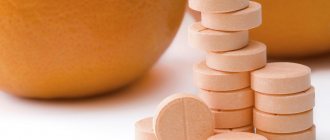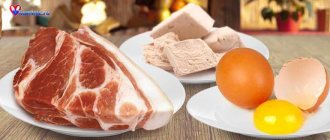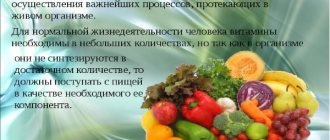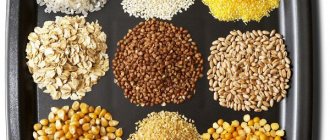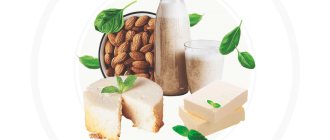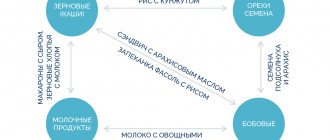The positive effect of this vitamin on the human body. What fruits, vegetables and berries contain this useful element. Thousands of articles and dissertations have been written about the benefits of vitamin C. Moreover, the element itself was discovered back in 1927. The famous scientist St. Gyori managed to extract ascorbic acid from cabbage and orange juice, as well as red pepper. Initially, the element was called hexuronic acid, and it began to be called “ascorbic acid” only in 1932.
Without a sufficient amount of this substance in the diet, normal functioning of the body is impossible. Many of us know that ascorbic acid is a reliable assistant in strengthening the immune system and providing preventive action. But is this the only element capable of doing this? What vegetables and fruits with vitamin C should be added to your diet? What should its norm be? There are many questions, and each requires detailed consideration.
What foods contain ascorbic acid - table
Contrary to popular belief, vitamin C is not only found in sour-tasting foods.
The substance is present in any vegetables, fruits and herbs, so the list of products will be quite impressive. It is generally accepted that citrus fruits (oranges, lemons, limes) contain the most ascorbic acid. However, this is not at all true. Juicy tropical fruits are inferior in health even to ordinary parsley, which contains 173 mg of acid per 100 g of product. The table below shows that oranges and grapefruits are not ahead of even some varieties of cabbage in terms of health benefits.
Dried rose hips contain the largest amount of ascorbic acid. But in order for it to retain its unique beneficial properties, the product should be consumed without preliminary heat treatment.
It is best to prepare an infusion by pouring 80-90 degrees water over the berries overnight. You can add dried fruits to fruit salads or sweet desserts by first grinding or chopping them with a knife.
The table provides a list of foods richest in ascorbic acid. By reading it, you can find out which foods have the highest vitamin C content.
| Product name | Vitamin C content, mg/100 g | Percentage of daily requirement |
| Rose hip | 650 | 930 |
| Black currant | 200 | 286 |
| Kiwi | 180 | 260 |
| Brussels sprouts | 100 | 140 |
| Dill greens | 100 | 140 |
| Broccoli | 90 | 127 |
| Orange | 60 | 86 |
| Spinach | 55 | 79 |
| Grapefruit | 45 | 64 |
| White cabbage | 45 | 64 |
| Lemon | 40 | 57 |
| Mandarin | 38 | 54 |
| Beef liver | 33 | 47 |
| Green peas | 25 | 36 |
| Tomato | 25 | 36 |
| Persimmon | 15 | 21 |
| Cherries | 15 | 21 |
| Beef kidneys | 10 | 14 |
| Apples | 10 | 14 |
| Kumis | 9 | 13 |
| Watermelon | 7 | 10 |
| Champignon | 7 | 10 |
The level of ascorbic acid in all products depends on the conditions of how and where they were grown. Its concentration decreases if chemical fertilizers were used during cultivation and the storage conditions of the products were violated. In addition to the fact that rose hips contain a lot of vitamins, they are also useful because they contain bioflavonoids that improve the absorption of ascorbic acid.
A glass of fresh strawberries or one medium-sized orange covers the daily intake.
Probably no one will remember where the myth about the “high content of vitamin C” in lemons came from. And why many of us consider lemons to be perhaps the main supplier of ascorbic acid in winter. Maybe this comes from our childhood, when during the cold season there was practically nothing in stores from fruit, and lemons and tangerines from the southern republics served not only as symbols of the New Year, but also as a “vitamin boost.”
Or maybe because for the first time vitamin C (ascorbic acid) was obtained from lemon juice. But I hasten to disappoint you, lemons and tangerines contain only 40 and 38 mg of vitamin C per 100 g of food. But there are a lot of vegetables and fruits, loved by many of us, familiar in our climatic and regional conditions, which contain many times more vitamin C!
in kiwi - 137.2 mg, in mango pulp - 122.3 mg, in papaya - 88.3 mg, and in pineapple - 78.9 mg per 100 g of product. But what does this give us other than knowledge? Those “exotics” that lie on the shelves of our supermarkets and no longer contain half of this amount, because most often they are picked while still unripe, brought from distant lands and “ripen” here.
That’s why I offer you our “native” sources of vitamin C. But first, let me remind you why we need it. Ascorbic acid, being a powerful antioxidant, protects the body from bacteria and viruses, has anti-inflammatory, wound-healing and anti-allergic effects, strengthens the immune system and enhances the effect of other antioxidants, such as selenium and vitamin E.
Relieve stress with vitamin C
Vitamin C influences the synthesis of a number of hormones, including anti-stress hormones, regulates hematopoiesis and normalizes capillary permeability, participates in the synthesis of collagen protein, which is necessary for the growth of tissue cells, bones and cartilage in the body, improves the body’s ability to absorb calcium, removes toxins, regulates metabolism.
Vitamin C is classified as water-soluble, so it does not accumulate in the body, and its reserves must be replenished from the outside. Ascorbic acid does not like high temperatures, light and oxygen. Therefore, with all types of cooking, most of it is destroyed, which must be taken into account and more often eat fresh food.
In summer and autumn, when fruits and vegetables ripen, our body receives ascorbic acid in quantities that often significantly exceed the indicated daily requirement, but in late autumn - winter and especially early spring we often lack vitamin C. Therefore, I offer you a dozen “our » his sources.
Perhaps even babies know that rosehip is a champion in ascorbic acid content. And the taste of rosehip infusion is probably familiar to everyone. But few people know that our “native” rose hips also have a very high antioxidant capacity to absorb free radicals (ORAC). Remember the hype around acai berries, which were declared almost a panacea for all diseases? Indeed, for acai berries this coefficient is perhaps the highest - 102,700, but only for fresh ones, and they are very capricious and spoil quickly.
For comparison, the well-known “storehouses” of antioxidants, such as blueberries or cranberries, have 5905 and 9090, respectively. So, the closest thing to acai is fresh rose hips with ORAC 96150. But the advantages of rose hips are that you don’t have to take them anywhere far , and therefore our champion “outperformed” acai berries in all respects. And if you add the rest of its beneficial properties.
The second place is deservedly taken by the red bell pepper of the Edino variety, which, in addition to vitamin C, contains a red-yellow pigment - carotene and a red pigment - lycopene - powerful antioxidants that reduce the risk of cancer. Red pepper is also a leader in the amount of vitamin A (125 mcg).
Read more: Types of vitamins and description of the role of vitamins in human life
Blackcurrant, adored by many, closes the top three. Due to its healing properties, it is often used in folk medicine for therapeutic and preventive purposes. In addition to vitamin C, blackcurrant berries contain vitamins B, P, group K, provitamin A, sugars, pectin substances, phosphoric acid, essential oils, tannins, potassium salts, phosphorus and iron.
On the same line with black currant is sea buckthorn, but I gave it fourth place only because it is not yet so common in the summer cottages and garden plots of our compatriots. And in taste, as many say, it is clearly inferior to currants. But here, as they say, who likes what! And sea buckthorn fruits are a natural multivitamin concentrate that can be stored frozen until spring.
If it were up to me, I would put apples first. Well, you must admit, which of you eats more red pepper or sea buckthorn with currants than apples! And we eat apples all year round. And we “get” vitamin C by the amount of fruits we eat. But apples are also the most common source of minerals (potassium, phosphorus, calcium, magnesium, sodium, a lot of iron) and other vitamins (E, carotene, B1, B2, B6, PP, folic acid) in an easily digestible form and in optimal combinations for you and me.
It is rich in vitamins C, group B, PP, K, provitamins A, contains folic acid, essential oils, many mineral salts of potassium, sodium, calcium, as well as magnesium, iron, phosphorus. All parts of parsley are used - root, leaves, seeds, both fresh and dried. And what else is good about parsley is the ability to grow it on a windowsill in winter, receiving a “portion” of vitamins and minerals every day!
It contains the antioxidants lycopene and carotene, a decent portion of fiber that normalizes intestinal function, as well as phytosterols - plant analogs of cholesterol that are involved in lipid metabolism and reduce the level of “bad” cholesterol.
Simply an ideal vegetable from the world of healthy eating, because in addition to vitamin C, it contains carotene and many high-quality plant amino acids - for example, choline and methionine, which prevent the accumulation of cholesterol in the body. This “bouquet” has a lot of dietary fiber, low calorie content, and in addition, broccoli has anti-carcinogenic properties. And one more plus of broccoli: unlike white cabbage, this cabbage does not cause “revolutions” in the stomach.
It is considered the most valuable among cruciferous vegetables, because it contains 2-3 times more vitamin C and 2.5 times more protein than cabbage vegetables. Its juice contains a lot of potassium, so it is recommended for hypertensive patients to eat cabbage. Due to the fact that it contains few coarse fibers, it does not cause stomach turmoil and is useful for all gastric ulcers.
One of the most common spices, which has a beneficial effect on many physiological processes in the body, the nutritional value of which is associated with the presence of essential oils, various vitamins (C, B1, B2, PP, P, provitamins A, folic acid) and minerals (iron salts, calcium, potassium, phosphorus in easily digestible form).
It is rich not only in ascorbic acid, but also in carotene, and in terms of the content of vitamin P, necessary for capillaries and proper functioning of the thyroid gland, it can be placed in one of the first places among fruits. Rowan berry preparations have antimicrobial, hemostatic, wound healing, diuretic, laxative and antifungal effects, reduce cholesterol in the blood, increase vascular resistance to adverse effects, reduce fat content in the liver, normalize metabolism, eliminate vitamin deficiency in the body, moderately increase gastric acidity juice, have a beneficial effect on anemia and exhaustion of the body.
Broccoli's closest relative. A 100-gram serving of cauliflower not only provides about 70 milligrams of vitamin C, but also 5 grams of fiber and 5 grams of protein.
Review your diet based on the information received and be healthy!
The opinion of the authors of the Community may not coincide with the official position of the Roskontrol organization. Do you want to add or object? You can do this in the comments or write your own material.
Vitamin C: why does a person need it?
Everyone knows about the miraculous properties of ascorbic acid. It protects against viruses and infections, strengthens the immune system, and speeds up recovery. Doctors advise drinking it for colds and flu, as well as during seasonal hypovitaminosis.
Vitamin C is one of the most important compounds needed for good health. It is called the beauty vitamin because it is responsible for the production of the main protein of connective tissue - collagen. If there is not enough of it, then the gums begin to bleed, joints weaken, and blood vessels deteriorate.
The vitamin plays an important role:
- promotes iron absorption,
- increases resistance to infections,
- reduces hay fever symptoms,
- has an anti-inflammatory effect,
- accelerates wound healing,
- regulates metabolism,
- improves calcium absorption,
- removes toxins,
- enhances the effect of selenium and tocopherol.
Ascorbic acid is a strong reducing agent and antioxidant. As a result of complex chemical reactions, it eliminates reactive oxygen species - free radicals.
The vitamin improves the effectiveness of vitamins A, E, B1, B2, B5 and folate. It is necessary for the production of enzymes that increase mental alertness and prevent depression. The chemical compound is involved in the synthesis of serotonin, the “happiness hormone”.
Ascorbic acid reduces capillary permeability, activates hematopoiesis, and affects the functioning of the thyroid gland. It protects the skin from adverse factors and smoothes out wrinkles.
Foods Highest in Vitamin C: List and Table
People knew about the beneficial properties of sour vegetables and fruits long before the discovery of vitamin C. Sailors, forced to stay off land for a long time and eat canned food, took lemons with them on their hikes, the consumption of which served as an excellent prevention of scurvy.
It is curious that the name “ascorbic acid” is literally translated from Latin as “anti-scurvy.” The organic compound with the formula C6H8O6 has several isomers, but only one of them, namely L-ascorbic acid, has biological activity.
It is curious that the name “ascorbic acid” is literally translated from Latin as “anti-scurvy.” The organic compound with the formula C6H8O6 has several isomers, but only one of them, namely L-ascorbic acid, has biological activity.
Recommendations
To make the most effective use of vitamin-containing products, you should know some rules. Following them will help preserve most of the ascorbitol. After all, even knowing which vegetables and fruits are the most useful, you can not get the necessary elements from them.
- Steaming allows you to retain more of the beneficial compound.
- Copper and iron utensils are enemies of vitamin C. The ions of these metals, separating from the utensils, destroy the substance.
- Smoking greatly reduces the amount of this “elixir of life.” Each cigarette deprives the body of 25 mg of the element. coffee consumption has the same effect .
- When in contact with oxygen, “ascorbic acid” is quickly destroyed , so you should not leave sliced foods in the air. Bright light also reduces the amount of the substance.
- The faster a food is heated during cooking, the more ascorbic acid it retains. It is healthier to immediately add vegetables to boiling water.
- Exotic fruits contain large amounts of ascorbic acid. However, to increase shelf life, fruits are often pumped with harmful chemical additives. It is better to give preference to fruits from local producers.
- The amount of the element decreases during drying, freezing, salting, pickling, and long-term storage of products. Fresh or sauerkraut retains ascorbite best.
How to preserve vitamins in food →
Which fruit has the most vitamin C is an important question for anyone who cares about their health. However, do not forget that many vegetables and berries also contain a vitamin that is so important for the human body. Eat plenty of vitamin C to stay healthy for years to come.
Vitamin C in food
As you can see, the most vitamin C is found in rose hips, red and green bell peppers, sea buckthorn, black currants, greens, parsley and Brussels sprouts.
What has more vitamin C? The undisputed “champion” in terms of ascorbic acid content is rose hips.
It contains so much “ascorbic acid” that experts advise that after each use of rosehip decoction, be sure to rinse your mouth with water so that tooth enamel is not destroyed.
A lot of vitamin C is found in dill, wild garlic, kiwi, red rowan and cauliflower.
Oranges, strawberries, red cabbage, strawberries, spinach and horseradish are quite high in vitamin C.
Vitamin C in vegetables is most found in green and red sweet peppers, Brussels sprouts, wild garlic, as well as dill and parsley.
It is worth paying attention to the following fruits and berries with vitamin C: kiwi, oranges, grapefruit, strawberries and strawberries.
But the content of vitamin C in lemon, which we are accustomed to considering as a “storehouse of ascorbic acid,” is disappointing.
In this capacity, citrus is significantly inferior in rating to its less “famous neighbors”.
Let's pay tribute to foods high in vitamin C, but we won't ignore those that occupy the bottom half of the C-vitamin table.
All vegetables, fruits and berries contain many valuable substances, so you should not exclude them from your diet.
Important tips for properly preparing and consuming foods rich in vitamin C:
- A fresh apple contains the enzyme ascorbinase, which, if the integrity of the fruit is damaged, destroys vitamin C. Therefore, it is better to cook a five-minute compote from whole apples or bake them in the oven. When heated, unstable ascorbinase is destroyed, but ascorbic acid is preserved.
- To more fully preserve the “ascorbic acid”, it is also more useful to bake potatoes in the oven with the peel or boil them “in their skins”. By the way, it was the widespread cultivation of potatoes in medieval Europe that managed to put an end to scurvy epidemics.
- Rose hips should not be brewed with boiling water and infused in a thermos. In this case, only an effective choleretic agent will be obtained. To get the maximum vitamin C from rose hips, fill it with water at a temperature no higher than 80 degrees, close the container with a lid and leave for several hours.
- There is also a lot of ascorbic acid in non-food plants. So, if there is a lack of vitamin C, decoctions, infusions and extracts from currant needles and leaves are very useful. And from the leaves of young nettle it is useful to make vitamin salads.
Read more: Vitamin C effervescent tablets 1000 mg 5 best drugs
Properly prepared foods high in vitamin C will help maintain health, youth and high performance.
source
source
source
Fruits, vegetables, berries
Of course, you can achieve your daily intake with pills. But doctors recommend doing this using natural products. There are many fruits, berries and vegetables that are high in this substance. It is especially important to use them during the cold season, because ascorbic acid perfectly strengthens the immune system.
It is worth noting that lemon, which is considered the most important source of ascorbic acid, contains little of this compound - only 40 mg per 100 grams. There is almost the same amount of it in a vegetable like potatoes.
The main fruits with vitamin C are kiwi, papaya, and pomelo. The vitamin is also found in vegetables. The record holders for its content are bell peppers, cabbage, and herbs (parsley). Berries are also useful if there is a lack of this useful substance. Rosehip, sea buckthorn, and black currant are rich in it.
However, most of all ascorbic acid contains a product that is exotic for our latitudes. This is a Barbados acerola cherry, which, according to various sources, contains from 2500 to 3300 milligrams of vitamin per 100 grams. On this page you will find products that are more familiar to residents of our country. Knowing which fruits and other fruits contain the most “ascorbic acid”, you can balance your diet. In addition, the element is best absorbed from vegetables, fruits and berries.
Daily intake of the substance
In order for the use of vitamins to bring only benefits, you need to know how much of the substance the body really needs. The human body's need for ascorbic acid depends on age.
For children under three years of age, 30 ml is enough. Older children will need about 40 mg, and teenagers need to consume 45-55 mg of the vitamin per day. The norm for an adult is approximately 75 mg.
Experts strongly advise smokers to increase this dosage by 25-30%, since nicotine destroys some of the beneficial substances supplied with food. For tobacco lovers, vitamin C is especially important, since the isomer somehow neutralizes the negative effects of addiction.
Pregnant women are also recommended to supplement their diet with products containing ascorbic acid so that the baby receives good immunity. For them, the norm is 95-100 mg per day.
The approximate daily requirement of vitamin C for an adult is 60-100 mg. Fluctuations in the daily norm depend on a number of factors, including the following:
- floor;
- smoking;
- drinking alcohol;
- presence of chronic diseases;
- climate;
- ecology;
- profession;
- pregnancy;
- lactation;
- physical activity.
Increased amounts of ascorbic acid are required for people with diseases such as diabetes, those taking antibiotics and birth control pills, and smokers. For colds, you need to consume up to 2000 mg per day to stimulate the body's protective functions.
Meat lovers should also consume more ascorbic acid. It reduces the harmful effects of nitrogenous compounds, which are abundant in meat and meat products (especially sausages and smoked meats). Those who regularly experience stress need to increase their daily intake.
In regions with extremely hot or cold climates, the need for vitamin C doubles.
The daily dose of ascorbic acid should be divided into several doses. This means eating several servings of vitamin-rich fruits and vegetables throughout the day.
Daily dosage, shortage and overdose
To properly plan your diet, it is worth knowing which fruits and vegetables contain vitamin C, as well as how much of it the body requires for normal functioning. The daily rates are as follows:
- adults - 80-100 mg ;
- pregnant women - 130-150 mg ;
- children (up to seven years old) - 30-50 mg ;
- children (from seven to fourteen years old) - 65-70 mg .
Above are the average levels of the vitamin that should be contained in the diet of each of us. But in some cases the need grows:
- during active physical activity;
- in case of severe stress;
- during periods of illness and so on.
The formation of a diet should be approached with special responsibility, because with a deficiency, a number of unpleasant consequences may occur. First of all, the immune system suffers, and the risk of scurvy increases. It is also possible that:
- weakness and feeling of fatigue;
- decreased appetite;
- violations of the integrity of the gums (they weaken and become vulnerable);
- anemia;
- swelling of the joints;
- failure of the heart muscle and so on.
On the other hand, it is not recommended to take a lot of ascorbic acid. The optimal concentration of the substance in the blood is 10 mg/1 liter. If the amount of vitamin is greater, then the body’s ability to absorb the element first decreases, and then there is a likely risk of skin itching, constipation, diarrhea, colic, giardiasis and other problems.
The ideal option is to make a list of which vegetables and fruits contain vitamin C, indicating their volume. In this case, it is possible to easily accumulate 1-1.5 grams of an important element in the body. If the portion present exceeds 2 grams, then the risk of complications is high.
All vitamin C products and healthy recipes
In the 21st century, cases of scurvy occur not only in third world countries, but also in developed, prosperous countries: in 2018, 30 cases of scurvy were registered in the United States in people of average income who could afford to eat well. The reason for vitamin deficiency lies in lack of awareness of nutritional culture, consumption of unbalanced and unhealthy foods.
People who care about their health think about which foods contain the most vitamin C, how to properly prepare and store them. In cases where dietary enrichment is not enough, vitamin food supplements come to the rescue.
To get the maximum benefit from your food, you need to use foods high in vitamin C and either gently process them or eat them raw.
- 1 large red pepper;
- 200 g white cabbage;
- 2 tomatoes;
- greens (parsley, dill, spinach, green onions);
- olive oil;
- garlic.
Finely chop the cabbage, mix with chopped tomatoes, peppers, and chopped herbs. Salt the vegetables. Mix 2 tbsp. olive oil with a crushed clove of garlic, season the salad, mix. You can add herbs and spices to taste (rosemary, basil, oregano, savory).
Berry tea
- 2 tbsp. sea buckthorn;
- 2 tbsp. black currant;
- 1 tbsp. juniper berries;
- 4 tsp Sahara.
Lightly crush the juniper berries in a mortar, mash the sea buckthorn and currants with a spoon. Mix all the berries with sugar, pour 500 ml of boiling water, leave for 20 minutes, strain. Honey can be used instead of sugar, but it should be added immediately before drinking the drink.
- 4-5 ripe grapefruits;
- 100 g sugar;
- 2 tsp agar-agar;
- 50 ml water.
Extract the juice from the fruit using a citrus juicer, mix with sugar and agar-agar dissolved in water. Pour into a ceramic or enamel pan, put on fire, and boil the mixture for 2 minutes. Pour the liquid into silicone molds, cool, and put in the refrigerator to harden.
You can make marmalade rich in vitamin C not only from grapefruit, but also from black currants, lemons and tangerines.
- 350 g cranberries;
- 300 ml heavy cream;
- 200 g sugar;
- 100 ml milk;
- 3 egg yolks;
- a pinch of vanillin.
Whisk the yolks, sugar, vanillin and milk until smooth. Place the bowl with the mixture in a water bath, stirring and heating for about 10-15 minutes until thickened (the consistency of condensed milk). Cool. Blend the cranberries with a blender and pass through a sieve to separate the seeds. Combine the resulting puree with the cooled milk-egg mixture.
Original ice cream with vitamin C is also made from sea buckthorn. It can be prepared using a similar technology.
Rose hip syrup
- 500 g rose hips;
- 500 g sugar;
- 800 ml water.
Wash fresh rose hips, remove stems and sepals. Pour 500 ml of boiling water and let it brew for 15 minutes. Then crush with a masher and leave for another 15 minutes. Add sugar to the remaining 300 ml of water, boil and simmer for 10 minutes until thickened. Strain the resulting rosehip infusion through a sieve, pour into boiling syrup, immediately turn off the heat and pour while still hot into jars.
There are many recipes for this sweet delicacy, but the most important thing when choosing the appropriate cooking method is which rosehip syrup will contain the most vitamin C: ascorbic acid will be preserved if the berries are not boiled, but poured with boiling water.
Read more: Vitamins Junior Dietary supplements Vision health for Children. Buy vitamins dietary supplement JUNIOR lifepack Vision Vision in Moscow with delivery throughout Russia
Vitamins in vegetables
T. Wagner. "Planet of Beauty"
Fruits and vegetables today contain less vitamins and minerals than 50 years ago. The amount of iron, calcium and vitamin C in them has especially decreased. This means that today anyone who wants to enrich their body with vitamins needs to eat four carrots instead of one. But if we are talking about vitamins, this statement does not apply to the calories contained. The scientists themselves have not yet drawn any conclusions. The main explanation for the observed phenomenon may be that when breeding new varieties, breeders mainly pay attention to increasing the volume of products obtained, and not to the content of useful substances in them, and today producers are doing everything to harvest the maximum amount of harvests per year.
Vitamins in vegetables
Vegetables are a source of many vitamins and mineral salts necessary for the human body. Their lack, especially in winter and early spring, is one of the reasons for the decrease in the body's resistance to various diseases.
Vegetables are indispensable in our diet
Experts have found that the physiological human need for these products (including potatoes) is 250 kg per year. The great importance of vegetables is determined by their high content of easily digestible substances, in particular carbohydrates. Vegetables are rich in vitamins and mineral salts necessary for the human body. They also contain proteins, various organic acids and essential oils that have a beneficial effect on digestive processes. For example, potatoes are very rich in starch, and beets are very rich in sugar, cabbage has a lot of vitamin C, and carrots have carotene, from which vitamin A is formed in the body. Rhubarb is characterized by a high content of organic acids, green peas are rich in proteins, dill is rich in aromatic substances. Therefore, it is necessary to eat the widest possible range of vegetables, using them both raw and for preparing various dishes.
Adding vegetables to meat, fish and other foods helps improve their absorption. Vegetables stimulate the entire digestion process. Their importance in dietary nutrition is great.
Vegetables are the most accessible and sometimes the only source of vitamins, so they are necessary in our daily diet.
Vitamin A (carotene) Found in carrots, tomatoes, red peppers. Carotene is characterized by an orange color. In combination with the green substance - chlorophyll, the orange color of carotene is less noticeable, but its content is very significant in green vegetables: spinach, sorrel, green peas, beans. This vitamin is extremely necessary for humans - it promotes the healing of wounds, burns, the treatment of gastric diseases, and increases the body's resistance to colds and infections. With a lack of vitamin A, vision deteriorates, first of all, and general weakness of the body occurs.
Vitamin B1 (thiamine) Found in peas, beans, tomatoes, spinach and some other vegetables. It strengthens the nervous system, prevents digestive disorders, and improves the absorption of carbohydrates. The daily need for it is 2-3 mg, but its absence can contribute to the development of diseases.
Vitamin B2 (riboflavin) Green peas, onions, and spinach are rich in it. The body's need is 2 mg per day. This vitamin also strengthens the nervous system and improves food absorption. Lack of vitamin B2 in the body causes hair loss and skin diseases.
Vitamin C (ascorbic acid) Found in cabbage, lettuce, green peas and beans, peppers, tomatoes, radishes, spinach, and potatoes. It protects against scurvy, promotes the healing of wounds, fractures, ulcers, increases the overall tone of the body and, thereby, contributes to its resistance to infections, improves the absorption of food. In the absence of vitamin C, protein metabolism is disrupted. The daily requirement for an adult is 50 mg. It is very unstable, so when processing vegetables it is better to use enamel dishes, and ideally not to heat-treat vegetables at all. If we want to feed our body with vitamin C, then freshly squeezed juices are best suited for this, provided that they are drunk immediately after preparation.
Vitamin K Most of it is found in spinach, lettuce, and tomatoes. It helps stop bleeding and promotes wound healing.
Vitamin P (citrine) Contained in carrots, red peppers, parsley, spinach, tomatoes. It strengthens the walls of blood vessels and promotes their elasticity.
To preserve the nutritional value of vegetables, it is important to properly process and prepare them. They should be washed in cold running water, after which they can be cut. Vitamins and mineral salts in vegetables are located directly under the protective shell in the peel and pulp. The larger they are cut, the less vitamin loss. It is best to cut vegetables before processing, because... if left for more than 3 hours (including in water), they lose their nutritional and taste qualities.
For salads and vinaigrettes, it is better to cook vegetables unpeeled so that the vitamins in them are less destroyed. For the same purpose, it is advisable to steam or stew vegetables. If they need to be cooked, then they are poured with boiling water, because... at high temperatures, the action of enzymes that destroy vitamin C stops. Water from cooking vegetables can be used to prepare first courses. If vegetable soup is prepared with meat broth, then first bring it to a boil and then put chopped vegetables into it. To preserve vitamin C as much as possible during cooking, vegetables should be cooked in a saucepan with a tightly closed lid, avoiding rapid and excessively long boiling. Try not to overcook vegetables. It is better to put green vegetables in prepared dishes, and if you cook them, then for no more than 5 minutes.
Vegetable dishes should be prepared shortly before consumption: during storage and heating, the valuable nutrients they contain are destroyed. Salads and vinaigrettes can be stored for no more than 6 hours and undressed (in the refrigerator - up to 12 hours).
Unfortunately, in the conditions of a megalopolis, there is a clear lack of vitamins in the diet of both adults and children. Maybe now, when we pay attention to preserving vitamins in food, it will become easier for our body to cope with spring vitamin starvation, but we would recommend taking vitamin preparations in addition to all this. Which ones exactly? Let it be multivitamins with microelements and be sure to consult your doctor about contraindications and how to take them. Be healthy and happy!
Fruits and vegetables today contain less vitamins and minerals than 50 years ago. The amount of iron, calcium and vitamin C in them has especially decreased. This means that today anyone who wants to enrich their body with vitamins needs to eat four carrots instead of one. But if we are talking about vitamins, this statement does not apply to the calories contained.
The scientists themselves have not yet drawn any conclusions. The main explanation for the observed phenomenon may be that when breeding new varieties, breeders mainly pay attention to increasing the volume of products obtained, and not to the content of useful substances in them, and today producers are doing everything to harvest the maximum amount of harvests per year.
How does vitamin deficiency manifest itself?
Insufficient consumption of foods containing ascorbic acid leads to rapid fatigue, absent-mindedness, and memory impairment. A person becomes lethargic, shortness of breath appears with little physical exertion, and the body’s resistance to various forms of infections weakens. And these are only external manifestations.
Since it is this isomer that is responsible for capillary permeability, its deficiency can result in the development of hemorrhoids and varicose veins. Without vitamin C, the body does not absorb iron and calcium well, and this is fraught with anemia, disruption of the cardiovascular system, and excess weight gain.
Since it is this isomer that is responsible for capillary permeability, its deficiency can result in the development of hemorrhoids and varicose veins. Without vitamin C, the body does not absorb iron and calcium well, and this is fraught with anemia, disruption of the cardiovascular system, and excess weight gain.
Table of vitamin content in fruits (see)
| Vitamins | Fruits | Action |
| Vitamin A (retinol) | mango grapes melon watermelon apricots peaches apples | -improves vision; - supports the state of the immune system; - “controls” the health of hair and skin, the growth of bones and teeth; - “manages” the reproduction of cells and a number of hormones; -used as a preventative against cancer; -prevents early aging. |
| Vitamin B1 (thiamine) | apples grapes watermelon | -necessary for the healthy functioning of the heart, nervous and digestive systems; -regulates the metabolism of fats and carbohydrates. |
| Vitamin B2 (riboflavin) | apples grapes watermelon | -regulates the metabolism of proteins, fats and carbohydrates; -reduces eye fatigue; -participates in the processes of cell growth and respiration; -minimizes the negative effects of various toxins. |
| B3 (niacin, nicotinic acid) | grapes pineapple apples watermelon | -helps the functioning of the digestive system; -participates in the metabolism of fats and proteins; -reduces total cholesterol; -neutralizes the effects of toxins. |
| B4 (choline) | oranges | -participates in the prevention of atherosclerosis; - prevents diseases of the nervous system. |
| B5 (pantothenic acid) | avocado | -stimulates the production of adrenal hormones - (glucocorticoids), which helps in the treatment of allergies, heart disease, arthritis, colitis; -promotes the absorption of other vitamins; -participates in the metabolism of fatty acids. |
| B6 (pyridoxine | apples grapes bananas watermelon | -reduces cholesterol and lipid levels in the blood; -necessary for the normal functioning of the central and peripheral nervous system. |
| B9 (folic acid) | watermelon bananas grapes oranges | -relieves increased anxiety and depression; -helps with liver diseases (chronic hepatitis, cirrhosis), -useful for atherosclerosis; -used in the treatment of psoriasis. |
| Vitamin B12 (cobalamin) | grape | -necessary for maintaining normal hematopoiesis; -plays an important role in protein metabolism; -stimulates growth processes; -involved in the synthesis of a number of enzymes; -participates in carbohydrate, fat, protein metabolism; -used for diseases of the nervous system; -useful for various types of anemia; -participates in the prevention and treatment of atherosclerosis; -helps with hepatitis and cirrhosis; -increases resistance to viral infections and colds; -improves memory and concentration; -reduces cholesterol in the blood. |
| Vitamin C (ascorbic acid) | apples grapes oranges and citrus fruits watermelon passion fruit kiwi mango pineapple avocado peaches pears | – protects body cells from free radicals (antioxidant activity); -prevents the development of cancer and diseases of the cardiovascular system); -helps in collagen production (healthy skin and bones); -improves iron absorption. |
| Vitamin D (calciferol) | citrus | -participates in the regulation of metabolic processes and cell reproduction; - assists the body in the absorption of phosphorus and calcium; -stimulates hormone synthesis. |
| Vitamin E (tocopherol) | avocado peaches mango nectarine kiwi | -slows down skin aging; -protects cells from damage; -participates in the formation of red blood cells; -Helps the absorption of vitamin A. |
Types of Vitamin C Sources
The need for ascorbic acid depends on gender, age, physiological state of the body, climatic conditions of residence, as well as diseases and bad habits. The average daily intake is 60-100 mg per day.
Most of the vitamin is found in raw vegetables and fruits, and in some animal products. Being a heat-labile molecule, ascorbic acid is destroyed by heat treatment, so there is little vitamin in a diet lacking raw food.
In the winter-spring period, you should pay attention to the consumption of especially valuable sources of vitamin C: properly prepared rose hips, sea buckthorn, black currants, rowan berries, fresh bell peppers, apples, cabbage, and herbs.
Since the micronutrient does not accumulate, it will not be possible to create a reserve in the body - the supply must be stable and daily. It is possible to prevent hypovitaminosis against the background of a limited diet with the help of nutritional supplements that will ensure that the need for vitamin C is met and will reduce dependence on the amount of fresh fruits and vegetables.
Main functions
As already mentioned, the content of ascorbic acid in the diet provides a powerful preventive effect and helps strengthen the immune system. But that's not all. Its action is also aimed at solving a number of other problems:
- Normalization of the process of producing hormones and amino acids required by the body. Also, adding vegetables and fruits, which contain a lot of vitamin C, to the diet, it is possible to normalize protein-carbohydrate metabolism (this is especially important for athletes).
- Reducing the risk of a number of problems, including coronary heart disease, circulatory disorders (including the brain), excessive increases in cholesterol levels, hypertension, and so on.
- Tissue restoration and accumulation of glycogen in the liver, a positive effect on the quality and rate of blood clotting.
- Fighting allergies, as well as diseases such as diabetes, gastrointestinal cancer, hepatitis.
- Help with colds. Knowing which fruits contain vitamin C and supplementing your diet with them will make it easier to cope with herpes and ARVI.
- Ascorbic acid is also a reliable assistant for chronic fatigue syndrome, tuberculosis, rheumatism and other problems.
Fruits and berries
| Product | Vitamin C content per 100 g |
| Rosehip dry/fresh | 1200/650 mg |
| Black currant | 200 mg |
| Sea buckthorn | 200 mg |
| Kiwi | 180 mg |
| Red rowan | 100 mg |
| Orange | 60 mg |
| Grapefruit | 45 mg |
| Lemon | 40 mg |
| Mandarin | 38 mg |
| Raspberries | 25 mg |
| A pineapple | 20 mg |
| Cowberry | 15 mg |
| Cranberry | 15 mg |
| Cherries | 15 mg |
| Peach | 10 mg |
| Watermelon | 7 mg |
| Grape | 6 mg |
| Pomegranate | 4 mg |
Bell pepper
Many people are sure that if exotic fruits are not available to them, then there is no need to talk about proper nutrition. In fact, the same vitamin C can be obtained in large quantities from sweet peppers, known to us as bell peppers. Red varieties contain double the adult norm (190 mg).
They also contain retinol, which is an antioxidant and is very beneficial for vision. Green peppers are not as rich in ascorbic acid, there is only 120 mg of it, but this is still more than in grapefruit or lemon.
What are vitamins
These are simple compounds whose molecular formula is quite simple. But despite this, they are vital for the functioning of organic life. They can either come from the food you eat or be synthesized directly in the body.
Vitamin D from the table can only be formed under the influence of solar energy, therefore it is considered solar and irreplaceable.
These small compounds control metabolic processes in the body. The lack of even one of them can disrupt the complex operation of all systems. This can lead to complex diseases in a chain reaction.
Therefore, you need to try to establish the supply of each of them by creating the right diet.
Vegetables and greens
| Product | Vitamin C content per 100 g, mg |
| Red bell pepper | 250 |
| Parsley | 150 |
| Broccoli | 135 |
| Brussels sprouts | 120 |
| Dill | 100 |
| Cauliflower | 70 |
| Spinach | 55 |
| White cabbage | 45 |
| Sorrel | 43 |
| Radish | 25 |
| Tomatoes | 25 |
| Asparagus | 20 |
| Potato | 20 |
| cucumbers | 10 |
| Beet | 10 |
| Carrot | 5 |
Vitamin C from citrus fruits
It is believed that lemon, rich in vitamin C, helps with colds. In fact, lemons, oranges and other citrus fruits are only 10th in vitamin C content.
For example, there is much more vitamin C in bell peppers, tomatoes of various types, cabbage (broccoli and cauliflower), spinach, lettuce and parsley. Even potatoes contain more vitamin C than lemons.
However, the effect of Vitamin C contained in potatoes is small. During heat treatment, vitamin C is destroyed by almost 90% - boiled and fried potatoes contain almost no vitamin C. The same applies to all other vegetables and fruits. Therefore, the best source of vitamin C is raw vegetables and fruits.
Smokers are twice as likely to be vitamin C deficient as non-smokers. Therefore, try to consume it as much as possible from raw vegetables and fruits.
Black currant
Just half a glass of berries provides the body with double the daily norm of ascorbic acid. Blackcurrants can be eaten fresh. Or prepare for future use by deep freezing, so that you can later prepare sauces for cereal porridges or add to fruit salads. Cooling allows you to preserve all the beneficial properties of the product.
But making compotes or jam from berries is absolutely useless. The use of such preparations will not bring any benefit, since long-term heat treatment will completely destroy ascorbic acid.
Antioxidants
Antioxidants (rutin, hesperidin, cahetin) help the human body fight aging and environmental influences. They help reduce the likelihood of bleeding, normalize blood pressure, strengthen capillaries, and protect against allergens.
The main sources of antioxidants are berries: black currants, blueberries and grapes. Also, a handful of rowan berries contains the daily requirement of antioxidants.
If you liked the article, share with your friends!
source
Cabbage of various varieties
Did you know that Brussels sprouts and regular cabbage contain 75 mg of vitamin C, which is slightly less than a grapefruit? By preparing a plate of light vegetable salad for lunch, you will provide the body with a daily dose of ascorbic acid and healthy fiber, with a low calorie content of the dish. Broccoli and Kale cabbage contain even more beneficial substances (133 and 80 mg, respectively).
We don’t have to look long to find where ascorbic acid is found. If you ask what foods contain vitamin C, you will find on the list lettuce, spinach, dill, green and onions, which are familiar to every resident of the middle zone from childhood.
In addition to the beneficial ascorbic acid, greens contain B vitamins, which are necessary for the normal functioning of the nervous system. Regular table horseradish contains almost a double dose of the vitamin, but it is better to eat it fresh, straight from the garden. After a few weeks of storage, the benefits of the vegetable are noticeably reduced.
Are there vitamins in confectionery products?
Confectionery products contain few vitamins based on the weight of the product. These substances enter the body from eggs (white and yolk), cream, butter and flour. The following compounds may be present in sweets:
- thiamine;
- riboflavin;
- niacin (PP);
- ascorbic acid.
Confectionery products (cakes, pastries, cookies, candies) contain many food additives (thickeners, coloring agents, preservatives, flavor enhancers) and simple carbohydrates, so they should not be overused. It must be remembered that excessive consumption of sweets can cause obesity, atherosclerosis and coronary heart disease.
Other products
Meat products
Since ascorbic acid is synthesized by plants and is not accumulated by the muscle tissue of animals that consume them, vitamin C is absent in meat products. Some of it can be found in organs (liver, kidneys, lungs, brains), however, mandatory heat treatment greatly depletes dishes, so they are not recommended as the main sources of ascorbic acid.
| Product | Vitamin C content per 100 g, mg |
| Beef liver | 33 |
| Lamb liver | 25 |
| Chicken liver | 25 |
| Pork liver | 21 |
| Fried lamb liver | 13 |
| Beef kidneys | 9,4 |
| Fried chicken liver | 2,7 |
| Fried beef liver | 0,7 |
What products does it contain?
The correct formation of a diet from the point of view of filling it with ascorbic acid is a whole science:
- The vitamin is found in berries and numerous herbs. Large amounts are present in raspberries, blackberries and sea buckthorn. Among the herbs, the leaders are burdock root, hops, horsetail, eyebright, fennel, peppermint, and so on.
- Such an important element for the body is found in small amounts in products of animal origin - the adrenal glands, kidneys and liver of animals.
- Which vegetables contain vitamin C? Here it is worth highlighting the following representatives - cabbage, peppers, green peas and lettuce. In addition, ascorbic acid is found in beets, carrots, radishes, young potatoes and tomatoes. By filling your diet with these products, you can forget about the deficiency of the element for a long time.
- What fruits contain it? The most popular fruits with a sufficient amount of ascorbic acid include peaches, bananas, pears, apricots and persimmons. In addition, citrus fruits, including grapefruits, lemons, oranges and others, saturate the body with it.
